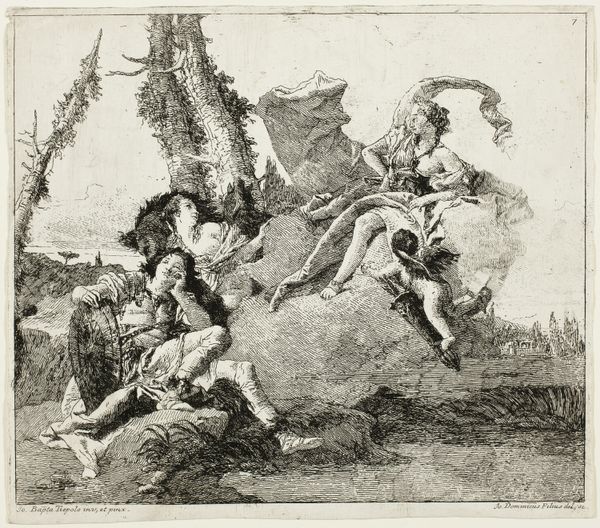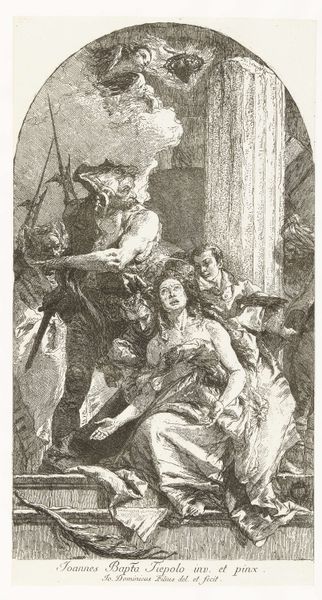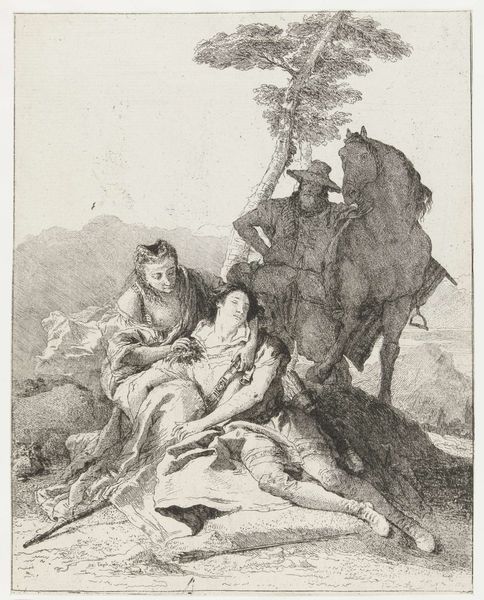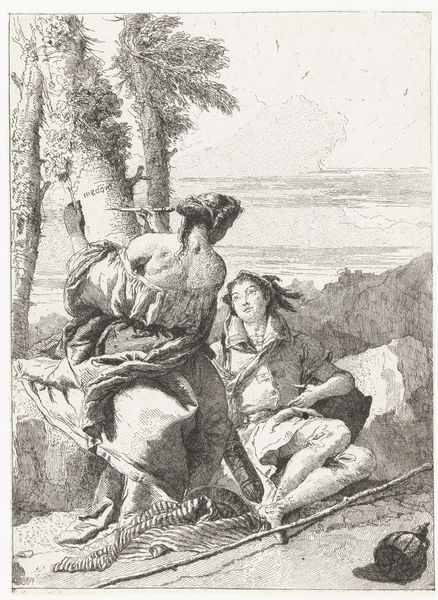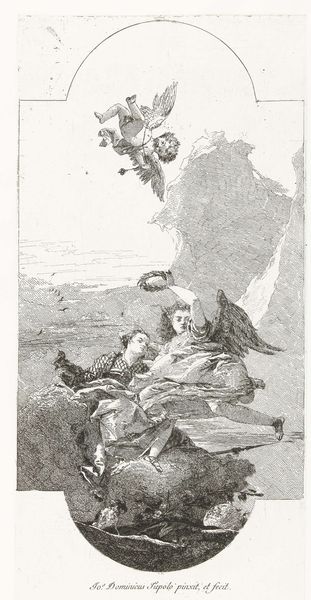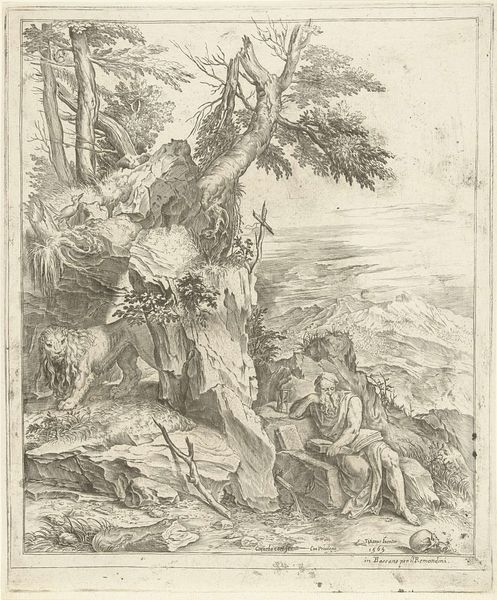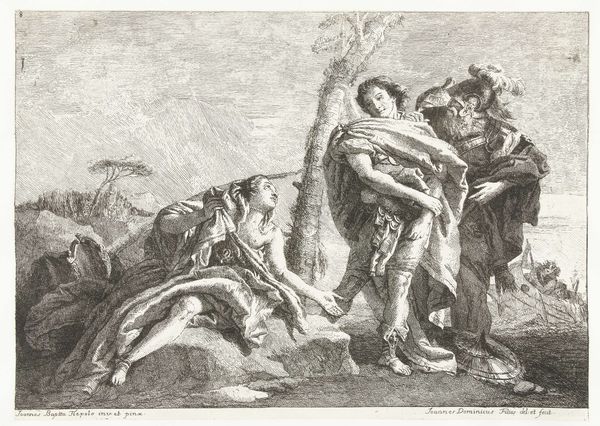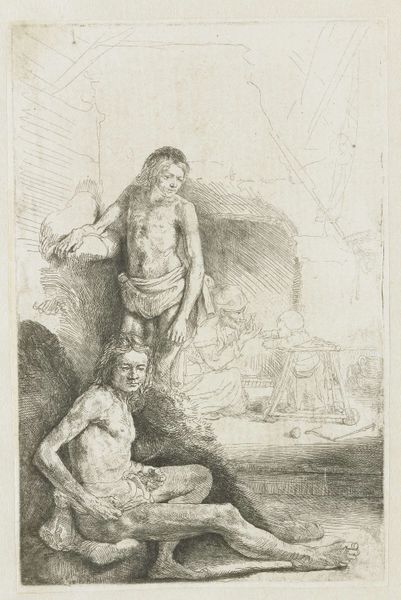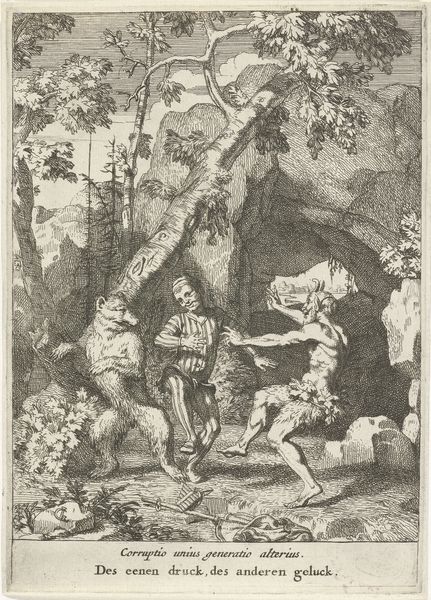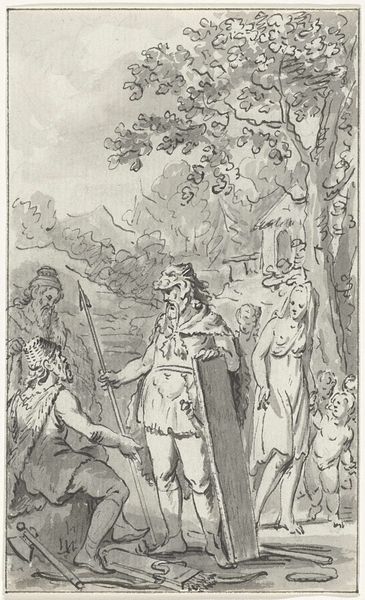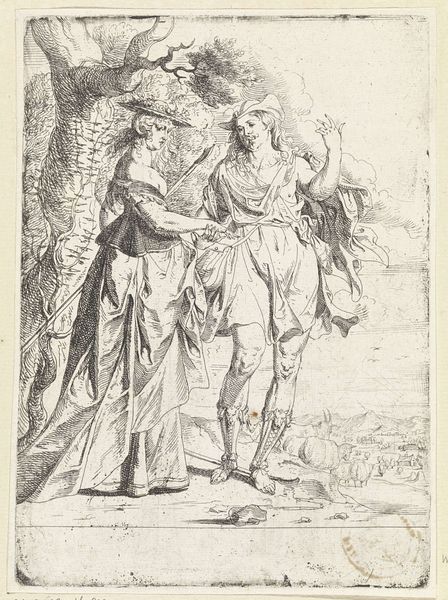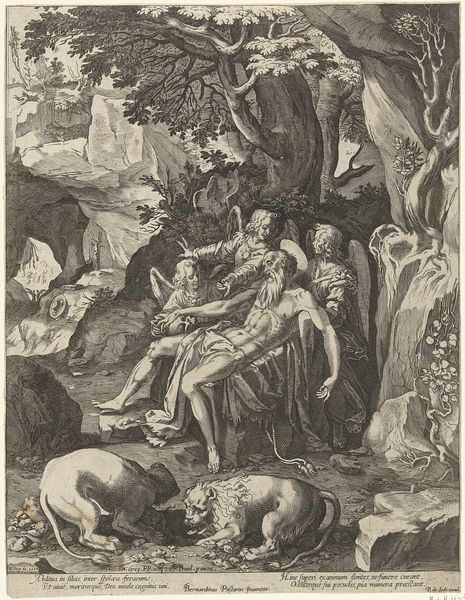
Rinaldo en Armida als liefdespaar aangetroffen bij een meer door twee ridders 1757 - 1775
0:00
0:00
Dimensions: height 294 mm, width 197 mm
Copyright: Rijks Museum: Open Domain
Editor: So, here we have Giovanni Domenico Tiepolo's etching, "Rinaldo and Armida as Lovers Discovered by Two Knights by a Lake," dating back to sometime between 1757 and 1775. It feels... theatrical, almost like a stage set. What do you see in this piece, considering its context? Curator: The theatricality you’re picking up on is key. Tiepolo's image isn't just a straightforward depiction of a romantic encounter; it's a commentary on power, gender, and the very act of observation. We need to ask: who are the observers in this image, and what power dynamics are at play as they interrupt this idyllic scene? Editor: The knights in the background, definitely. It feels like an intrusion. Curator: Precisely. Think about the larger narrative. "Rinaldo and Armida" is often interpreted as a story about the seductive power of the "other," the enchantress who threatens to derail the hero from his "masculine" duties of war and conquest. Tiepolo, through the gaze of the knights, makes us question that binary. Is Armida truly a threat, or is she being framed as one to reinforce existing power structures? Editor: That's interesting. It’s not just a simple love story; it reflects anxieties about outsiders and gender roles. So the knights become almost symbolic. Curator: Exactly! The male gaze becomes a tool of control, defining acceptable behaviour and punishing deviations. Tiepolo is engaging with themes that still resonate today regarding societal expectations and the policing of women's bodies and desires. What about the discarded armor? What might that signify in this context? Editor: Maybe vulnerability? A rejection of the usual male persona in favour of love and rest. Curator: Yes, the discarding of armour represents vulnerability, perhaps even a challenge to traditional notions of masculinity linked with warfare and dominance. Tiepolo subtly invites us to consider what other, less aggressive, forms of power might be possible. Editor: I never thought about it that way, but situating the artwork in its historical context really transforms how we perceive the scene, especially with gender roles and power dynamics in mind. Curator: And that’s where art becomes more than just a pretty picture; it becomes a mirror reflecting – and questioning – our own values and biases.
Comments
No comments
Be the first to comment and join the conversation on the ultimate creative platform.
